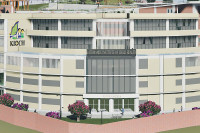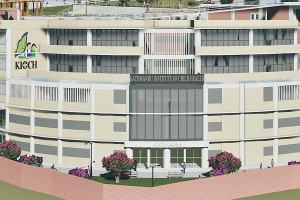Editorial
Glass half empty
The latest living standards survey points to all the ways the Nepali state fails to invest in its citizens.
The just published Fourth Nepal Living Standards Survey 2022-23 offers a mixed picture of poverty reduction over the past 12 years. The survey says the percent of people living below the poverty line declined from 25 percent to 20 percent of the population in the period. This reduction fell woefully short of the government target of bringing the number down to a single digit. Yet that is not the full story either. Back in 2010-11, when the third survey was last carried out, the per person per year poverty line was set at Rs 19,261, which, adjusted for inflation, would today come to Rs 42,845. But then Nepal recently revised its poverty line, which is now set at Rs 72,000. This is basically a way of saying that a person would need Rs 72,000 a year to meet their basic needs. According to the National Statistics Office, had the old baseline of Rs 42,845 been retained and had there been no revision in the basket of goods and services used to measure poverty, the rate would have plummeted to 3.57 percent.
There are also vast regional disparities. For instance, while the rate of poverty is 18.34 in urban areas, it is 24.66 percent in rural areas. In terms of provinces, Sudurpaschim has the highest poverty rate of 34.16 percent while Gandaki has the lowest, at 11.88 percent. There is near consensus among economists that what little progress has been made is largely due to remittance. Had it not been for an ever increasing volume of remittance, the state of poverty would be worse. The need to wean the country off remittance and the failure to invest the money coming into the country into productive sectors has been endlessly discussed, without much to show for it. What the latest survey results also suggest is that remittance can do only so much to lift people out of poverty and as importantly, to prevent households from falling back under the poverty line once the tap of foreign earnings dry up. Moreover, the vast regional disparities hint at the state’s failure to decentralise power and resources away from Kathmandu. Without adequate powers and resources, the seven provinces, in particular, are failing to work for the benefit of their people.
One way to cut down on poverty is through a drastic increase in investments in micro, small and medium-sized enterprises (MSMEs), which today form the backbone of all strong economies. Yet this sector is struggling as a result of the apathy of the government as well as the financial institutions. It is hard for small entrepreneurs to get loans, and even when they get them, they don’t come cheap. According to the United Nations Economic and Social Commission for Asia and the Pacific (UNESCAP), Nepal’s MSMEs face a $3.6 billion financing gap. Separately, had the government been able to invest more in development works, some of that money would make its way into the pockets of common folks. Yet the government, on average, spends just 60 percent of such a budget. These are just a couple of examples. Overall, what we see is a deep mismatch between the state’s commitment to improving the living standards of its people and the crony capitalist mindset of its rulers. It is this same mindset which is driving over 80,000 young people to leave the country in search of work every single month.




 5.4°C Kathmandu
5.4°C Kathmandu












%20(1).jpg&w=300&height=200)

